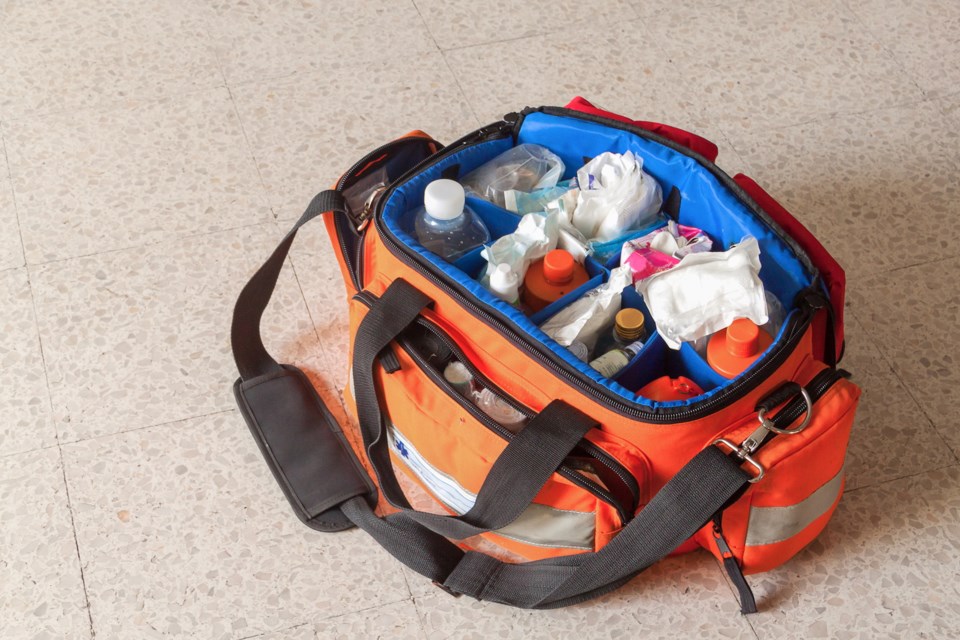NEWS RELEASE
CENTRAL YORK FIRE SERVICES
*************************
Central York Fire Services (CYFS) reminds residents of the importance of being prepared in case of an emergency as part of Emergency Preparedness Week, May 2 to 8, 2021. Each year, this “special week” is a national effort of provincial and territorial emergency management organizations, and Public Safety Canada.
“Emergencies and disasters can happen at any time. By taking an active role in developing and practicing a personal home escape plan, you are helping to build a culture of preparedness,” says CYFS Fire Chief Ian Laing. “It is crucial that if an emergency situation were to happen, all occupants would know their escape plan and how to get out of their residence quickly and safely while meeting the needs of their family.”
Emergency preparedness involves three basic steps:
-
Know the risks, know where you live – this will help you better prepare as we face a number of emergencies, such as a flood or tornado, depending on where you live.
-
Make a plan – Every household needs an emergency plan. It will help you and your family know what to do in case of an emergency. You are not prepared until you make a plan.
-
Prepare an emergency kit – In an emergency, you will need basic supplies. Ensure the supplies will last 72 hours or more and make sure everyone in your household knows where the kit is located.
To create a personal home escape plan, CYFS recommends that all members of a household:
-
Develop a personal emergency plan and know what to do when the smoke alarm or carbon monoxide alarm sounds. Sit down with each person in your household to discuss how each person will get out in a safe and timely manner.
-
Draw out a floor plan of your home, which includes all floors, doors, windows, and any features such as a garage, or porch roofs that could provide a safe passage to the ground and help with evacuation. Identify two ways out from each room, if possible, and include them on the map.
-
Practice the plan using different scenarios with every member of the household. For example, if there is smoke in the building, remember to ‘get low and go’ under the smoke to the nearest safe exit.
When planning and practicing, consider the needs of those who may require additional assistance, including young children, the elderly or individuals with disabilities and pets, and decide who will help those requiring assistance in case of an emergency.
-
Establish a meeting place (such as a tree or lamppost) that is a safe distance from the home in order to account for everyone. Practice evacuating the home and meeting at the designated meeting place with all members of the household.
-
Remember that once outside the home, get out and stay out. Call 9-1-1 from a cellphone or a neighbour’s phone and communicate with all members of the household that no one should ever re-enter a burning building until the situation has been resolved and emergency officials confirm the building is safe
-
Finally, remember it is the law that smoke alarms are installed on every level and carbon monoxide alarms are installed outside all sleeping areas of the home. Smoke alarms and carbon monoxide alarms provide the early warning signal needed to give sufficient time and allow you to escape home in an emergency.
In addition to home escape planning, CYFS provides details on how to prepare for all types of emergencies. Residents can view the Town of Newmarket’s Emergency Plan and learn about creating a personal emergency plan, as well as how to assemble a 72-hour kit for emergency situations (such as extreme temperatures, flash flooding, earthquakes, tornadoes, hurricanes, and power outages) by going to cyfs.ca.
Tips about emergency preparedness can also be found on CYFS social media channels which include Facebook, Twitter, Instagram, and Youtube, search Central York Fire Service/@CentralYorkFire.
About Emergency Preparedness Week:
Emergency Preparedness Week is a national awareness initiative that has taken place annually since 1996. A collaborative event takes place during the first full week in May by provincial and territorial emergency management organizations. The main objective of Emergency Preparedness Week is to increase individual awareness about what steps are to be taken to help reduce the dangers and lessen the consequences of a disaster.
*************************



